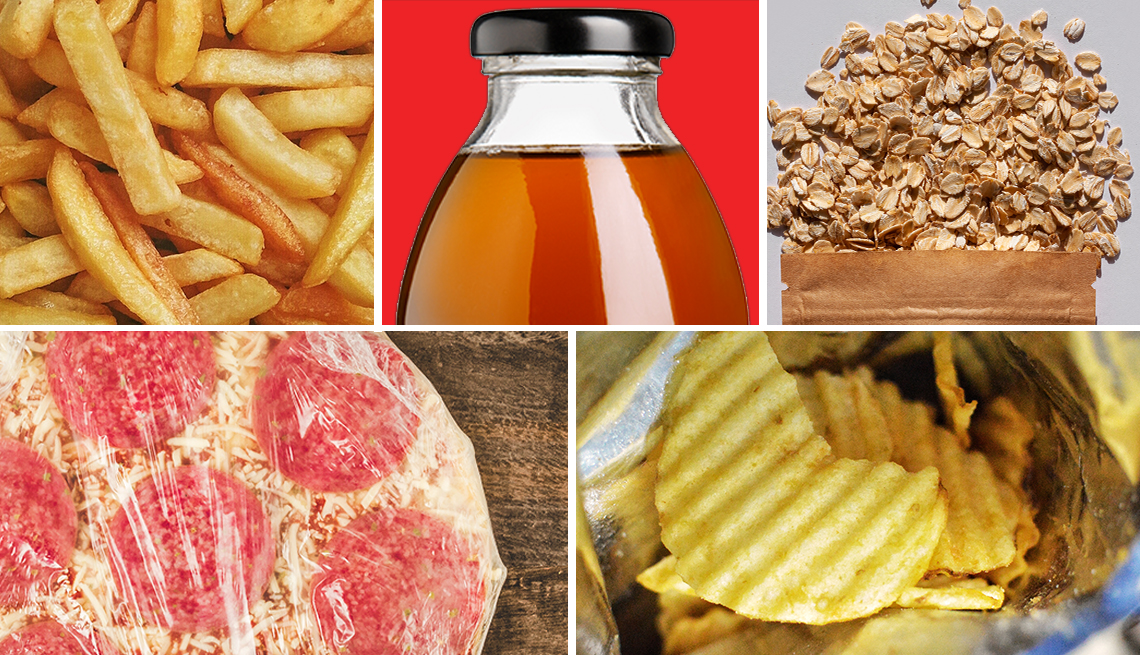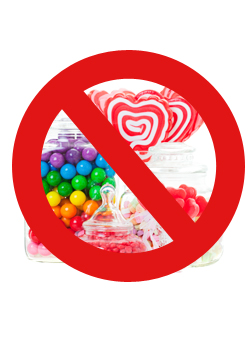
There are healthy foods that you can avoid if you have GERD. But, this doesn't mean you have to cut out all your favorite foods. Your diet can be modified to help you feel better and decrease your risk of getting GERD. Your diet should be modified to include non-citrus fruits. You can also eat more vegetables while avoiding high-fat varieties.
You can also add fresh herbs to your food to enhance the flavor. You should make sure they're not too acidic. Onions are an excellent way to add flavor to your stomach without inflaming it. For the same effect, try adding green or chopped shallots. Whatever type of onion, it is important to start slowly and increase the amount.
Tomatoes are a common food to avoid with GERD. Tomatoes are high in lycopene, a powerful cancer fighter. However, this acidity can irritate the already inflamed tissue in the esophagus. They should be avoided as much as possible. Watermelon is another food that contains lycopene.

You should not eat pizza every day if you are able. However, pizza should be eaten at least once per week. Combining spicy with fatty foods can worsen GERD symptoms. Fatty and fried foods should be avoided. Avoid coffee, chocolate, and alcohol. Caffeine drinks can irritate the esophagus and lead to acid reflux. Those with GERD should reduce their intake of caffeine drinks.
Avoid spicy foods on a regular basis. Even though onions are a healthy staple food, they can cause heartburn. Onion stimulates the production of acid and bile. It is possible to put out the fire by cooking onions. Adding onions to your list of foods you should avoid if you have GERD will help you manage it. These aren't necessarily the only foods you need to avoid if your GERD is severe.
While many of these foods are advisable to avoid, you may find that certain ones can make your symptoms worse. If you have GERD, it is best to avoid spicy foods. These foods can cause acid reflux by affecting the lower esophageal Sphincter. Avoid chocolates as they contain cocoa and caffeine. These substances are acidic, and should all be avoided when you have GERD.
It is crucial to understand which foods can trigger GERD. Some foods can trigger severe pain while others will only exacerbate the symptoms. Some foods to avoid with GERD include citrus fruits, citrus juice, and alcohol. To maintain your health, it is important to limit the intake of these foods. You should restrict the consumption of these foods in your diet. You should talk to your doctor if you are unsure about which foods you should avoid if you have GERD.

Spiced foods and alcohol should be avoided if you have GERD. GERD can occur from the foods they contain. Limiting your intake of these foods can lead to GERD. Remember that alcoholic and caffeine are both acidic. You can avoid certain foods if you suspect that your GERD symptoms could be related to a specific food.
Citrus fruits are another food that should be avoided if you have GERD. Citric acid can be a problem if you eat grapefruit or oranges. It is important to reduce your citrus fruit intake. You may not have to completely eliminate all citrus, but you should limit it to a moderate level. Instead, eat the fruits and drink as much as possible. You can limit the amount of citrus fruit you consume if necessary.
If you have GERD, you should avoid dairy products. Some people with GERD report that dairy products soothe their stomach, but it can aggravate the condition. Additionally, avoid caffeine, alcoholic drinks, as well as caffeine. Your diet could also be a factor in your GERD symptoms. Talk to your doctor to find out about any food allergies. If you are already taking medication for GERD, you will be able make a healthier decision.
FAQ
What is the difference between sugar and fat?
Fat is an energy source from food. Sugar is a sweet substance found naturally in fruits and vegetables. Both fats and sugars provide the same number of calories. However, fats contain more than twice as many calories as sugars.
Fats can be stored in the body, which can lead to obesity. They can cause cholesterol buildup, which can lead you to heart attacks and strokes.
Sugars are quickly absorbed into the body and provide instant fuel. This causes blood sugar levels to rise. High blood glucose levels are dangerous as it can increase the likelihood of developing type 2 diabetes.
Increase immunity with herbs or supplements
To boost immunity function, herbs and natural remedies are available. You can use ginger, garlic, echinacea oregano oil and vitamin C as examples.
These herbal remedies shouldn't be considered a replacement for medical treatment. These herbal remedies can cause nausea, vomiting, stomach cramps or dizziness.
What does it take to make an antibiotic work?
Antibiotics kill harmful bacteria. Antibiotics are used to treat bacterial infections. There are many types and brands of antibiotics. Some are taken orally, some are injected, and others are applied topically.
People who have been infected with certain germs may need antibiotics. If someone has chicken pox, they might need to take an oral antibiotic in order to prevent shingles. Penicillin might also be administered to someone with strep throat. This will help prevent the possibility of developing pneumonia.
Children should not be given antibiotics without the consent of a doctor. Children are at greater risk of developing side effects from antibiotics than adults.
Diarrhea is one of the most common side effects of antibiotics. Other possible side effects include diarrhea, nausea and vomiting, allergy reactions, dizziness, dizziness, stomach cramps, nausea, vomiting or allergic reactions. These symptoms usually go away after treatment ends.
Statistics
- This article received 11 testimonials and 86% of readers who voted found it helpful, earning it our reader-approved status. (wikihow.com)
- According to the Physical Activity Guidelines for Americans, we should strive for at least 150 minutes of moderate intensity activity each week (54Trusted Source Smoking, harmful use of drugs, and alcohol abuse can all seriously negatively affect your health. (healthline.com)
- WHO recommends consuming less than 5% of total energy intake for additional health benefits. (who.int)
- WHO recommends reducing saturated fats to less than 10% of total energy intake; reducing trans-fats to less than 1% of total energy intake; and replacing both saturated fats and trans-fats to unsaturated fats. (who.int)
External Links
How To
What does "vitamin" actually mean?
Vitamins are organic compounds found naturally in food. Vitamins help us absorb nutrients from foods we eat. Vitamins cannot be made by the body; they must be taken from food.
There are two types if vitamins: water soluble, and fat soluble. Water-soluble vitamins dissolve readily in water. Examples include vitamin C,B1 (thiamine), B2 (riboflavin), B3 (niacin), B6 (pyridoxine), folic acid, biotin, pantothenic acid, and choline. The liver and fatty tissues are home to fat-soluble vitamins. Some examples include vitamin D and E, K, A and beta carotene.
Vitamins can be classified according to biological activity. There are eight major types of vitamins:
-
A - vital for healthy growth.
-
C - vital for proper nerve function, and energy production.
-
D - Vital for healthy bones and teeth
-
E is required for good vision and reproduction.
-
K – Required for healthy nerves & muscles.
-
P – vital for building strong bones.
-
Q - Aids in digestion and absorption.
-
R - necessary for making red blood cells.
The recommended daily allowance of vitamins (RDA), varies according to age, gender, physical condition, and other factors. The U.S. Food and Drug Administration has established the RDA values.
For adults over 19, the RDA for vitaminA is 400 micrograms per daily. Because it is essential for the development of the fetus, pregnant women should consume 600 micrograms per daily. Children ages 1-8 require 900 micrograms per day. Infants under one year of age require 700 micrograms per day, but this amount decreases to 500 micrograms per day between 9 months and 12 months of age.
Children aged between 1-18 years require 800 micrograms of sugar per day, while overweight children need 1000 micrograms. Children who are underweight receive 1200 micrograms every day to meet their nutritional requirements.
Children between 4 and 8 years old with anemia will need 2200 micrograms daily of vitamin C.
2000 micrograms are required daily for good health in adults over 50. Breastfeeding or pregnant women require 3000 micrograms per daily due to higher nutrient demands.
1500 micrograms is the recommended daily intake for adults aged 70+, who lose approximately 10% of muscle each year.
Women who have been pregnant or are lactating require more than the RDA. Pregnant women require 4000 micrograms daily during pregnancy, and 2500 micrograms every day after birth. Breastfeeding moms need 5000 micrograms each day when breastmilk production occurs.